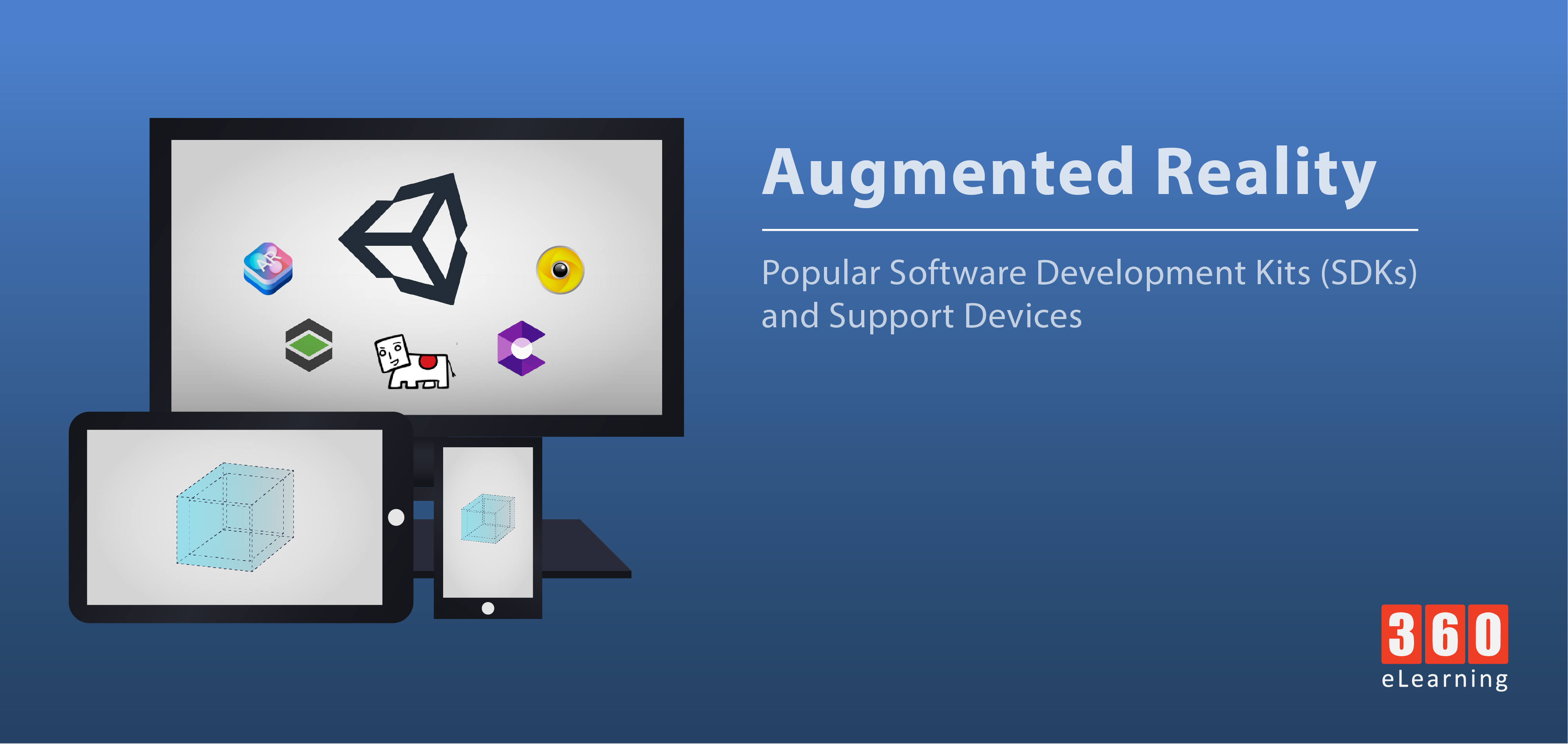When we say AR development on Unity 3D then SDKs are handy to save the time and give flexibility to developers to customize script according to their need. In this article, we will go through popular SDKs and AR support devices and key components of their devices.
Software Development Kits (SDKs)
A software development kit (also known as devkit) is nothing else than a package of software development tools. AR developers need it to make applications by using completed solutions. SDK is helpful and in the coding phase, especially with AR development, AR developer save time to avoid writing steps from scratch.
Here are some Popular SDKs to develop augmented reality mobile apps:
Apple ARKit
ArKit is Apple’s platform to build augmented reality experiences for hundreds of millions of users on iOS. The biggest AR platform in the world.
Supported Platforms: iOS.
Google ARCore
ARCore is Google’s platform for building augmented reality experiences. Using different APIs, ARCore enables your phone to sense its environment, understand the world and interact with information.
Platforms: Android.
Vuforia
Vuforia is an Augmented Reality (SDK) for mobile devices that enables the creation of Augmented Reality applications. It uses Computer Vision technology to recognize and track planar images (Image Targets) and simple 3D objects, such as boxes, in real-time.
Supported platforms: Android, iOS, UWP and Unity Editor.
Wikitude
Wikitude is a mobile augmented reality (AR) technology provider. The SDK includes image recognition & tracking, 3D model rendering, video overlay, location-based AR, and SLAM technology (Simultaneous Localization and Mapping) which enables object recognition and tracking, as well as markerless instant tracking.
Supported platforms: Android, iOS, Smart Glasses.
Kudan
Kudan AR SDK is an engine that gives applications the ability to see and understand their physical surroundings using the camera and sensors within the device. It provides various forms of tracking, as well as 3D rendering. The engine allows developers to easily integrate this capability into their own apps in order to position digital content within the real world.
Supported platforms: Android, iOS.
Key Components of Augmented Reality Devices
Sensors and Cameras
Sensors and cameras both are key components of any augmented reality device (smartphones). Sensors are usually on the outside of the augmented reality device, and gather a user’s real-world interactions and communicate them to be processed and interpreted. Cameras are also located on the outside of the device, and visually scan to collect data about the surrounding area. The devices take this information, which often determines where surrounding physical objects are located, and then formulates a digital model to determine the appropriate output.
Projection
The projector can essentially turn any surface into an interactive environment. The information is taken by the cameras used to examine the surrounding world is processed and then projected onto a surface in front of the user; which could be a wrist, a wall, or even another person.
Processing
Augmented reality devices are basically mini-supercomputers packed into tiny wearable devices. These devices require significant computer processing power and utilize many of the same components that our smartphones do. These components include a CPU, a GPU, flash memory, RAM, Bluetooth/Wifi microchip, global positioning system (GPS) microchip, and more.
Supporting Devices in Augmented Reality
Augmented reality can be supported in any smart devices such as smartphones, tablets, desktop, etc. For the Augmented Reality supports; the smartphones must have Gyro and Accelerometer. Any smartphone have these 2 components will support any basic augmented reality but for an Advanced AR effects, the smartphones must have Tango feature or ARKit.
Here are the details about devices that support ARCore, ARKit and Vuforia features.
iOS Devices
iOS Version:
ARKit requires an iOS device with iOS 11 and an A9 processor or later.
Vuforia requires minimum iOS 9+ for Ground Plane feature.
Below is the list of iOS devices that support Augmented Reality:
iPhone
- iPhone X
- iPhone 8
- iPhone 8 Plus
- iPhone 7
- iPhone 7 Plus
- iPhone 6s
- iPhone 6s Plus
- iPhone SE
iPad
- iPad Pro (all models)
- iPad (5th generation)
Android
Android Version
ARCore requires Android 7.0 (Nougat) and later.
Vuforia requires minimum 6.0 (Marshmallow) or newer with IMU w/ Gyroscope Sensors and Selective Image Stabilization for its Ground Plane feature.
Below is the list of Android mobile devices that support Augmented Reality:
Android Devices
- Asus Zenfone AR
- Asus ZenFone Ares
- Google Pixel 2
- Google Pixel 2 XL
- Google Pixel
- Google Pixel XL
- Huawei P20
- Moto Z2 Force
- OnePlus 5
- Samsung A5
- Samsung A7
- Samsung A8
- Samsung A8+
- Samsung Note8
- Samsung S7 to S9+
- Sony Xperia XZ
- Xiaomi (Mi Mix 2S)
- Xiaomi Redmi (Note 4 (Snapdragon)
- Huwawei P10 Lite
Conclusion:
In conclusion, the augmented reality technology support is still not available on many devices but soon many companies will provide AR supported devices.


